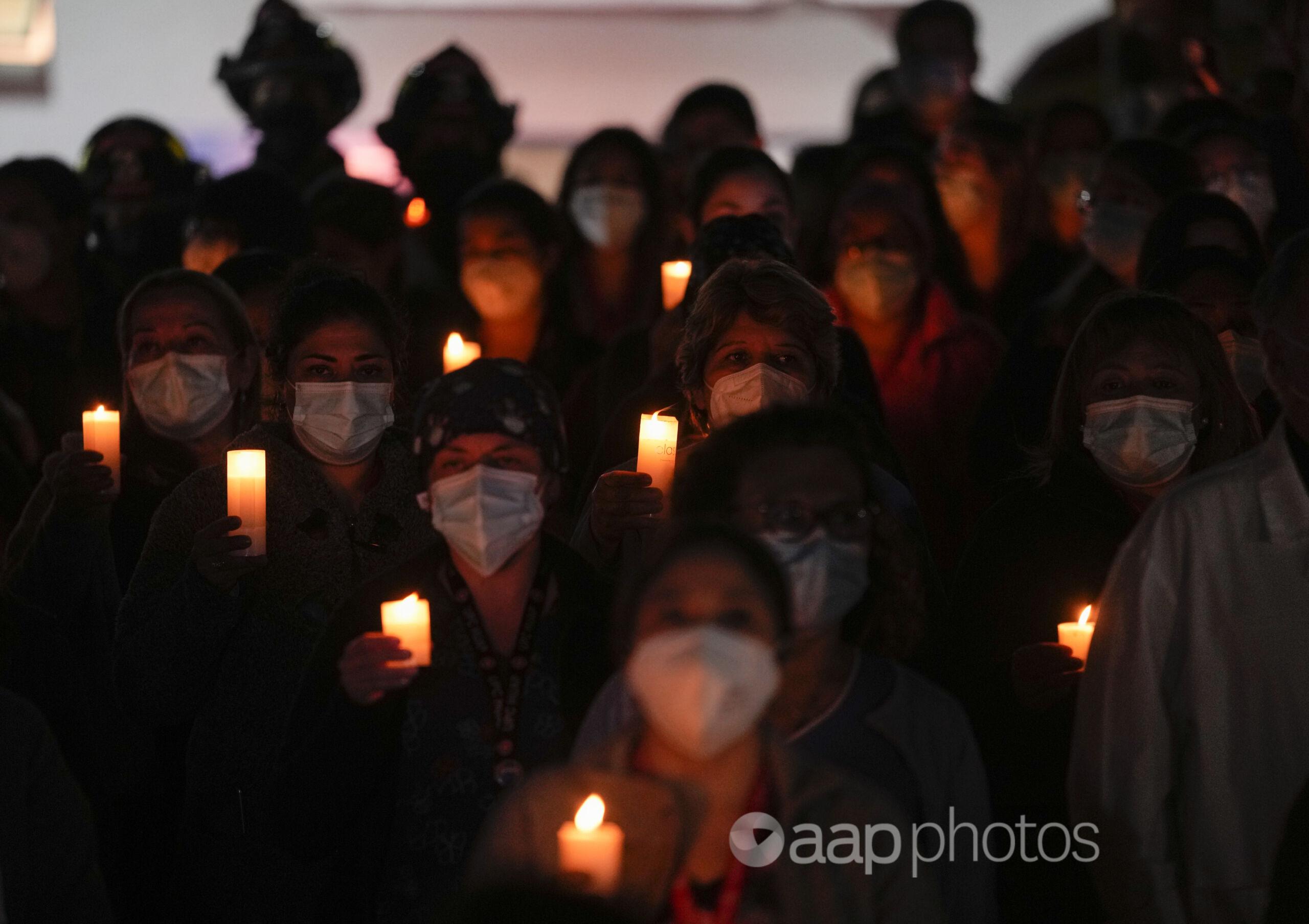The Statement
A Facebook post by the Australia-based Know Your Rights Group page in reaction to anti-lockdown protests in Sydney and Melbourne claims that police are overreacting as COVID-19 has an extremely high “survival rate”.
The August 21 post states: “The Police are now shooting rubber bullets at people to stop them from ‘catching’ a virus that has a 99.996% survival rate.”
At the time of writing, the post had been shared more than 1100 times. On its webpage, Know Your Rights Group describes itself as being committed to educating people “about their rights in all areas of life”. The site features various conspiracy theories and references to the pseudo-legal “sovereign citizens” movement.

The Analysis
The claim that COVID-19 has a “survival rate” of 99.996% is an incorrect and misleading representation of the virus’s impact.
Epidemiologists told AAP FactCheck any calculations of coronavirus were constantly changing based on new data, however the fatality rate among those infected far exceeded the figure. Simplistic calculations of death or “survival” rates also routinely ignored the long-term effects of COVID-19.
Jacques Raubenheimer, a senior research fellow in biostatistics at University of Sydney, said in an email that the post’s claimed survival rate was inaccurate and appeared to be based on a misinterpretation of figures from early in the pandemic.
Dr Raubenheimer, who has written on false statistics and COVID-19, said the 99.996 per cent figure seems to have originated from a US Centers for Disease Control and Prevention (CDC) document from May 2020 which contained pandemic planning scenarios for health officials.
It said the “current best estimate” for the COVID-19 symptomatic case fatality ratio (CFR) – the proportion of known COVID-19 patients with symptoms who would die from the illness – was 0.0004. (pg4)
However, the figure was expressed as a ratio and not a percentage. Dr Raubenheimer explained that when converted to a percentage the figure was 99.6 per cent – 100 times greater than the figure in the post.
The CDC document also repeatedly notes that it and other estimates in the document were intended for planning purposes only and were “not predictions of the expected effects of COVID-19”. It also noted that the figures would change as more data became available. (pg1)
“COVID conspiracy theorists took the document and ran with it,” Dr Raubenheimer said. A similar figure was fact-checked as misleading in August 2020.
For estimating COVID-19 mortality, two primary measures are used by epidemiologists – the infection fatality ratio (IFR) and the case fatality ratio (CFR). The IFR estimates the proportion of deaths among all people who have been infected in a population, while the CFR gives the proportion of deaths only among confirmed cases.
For example, the CFR for Australia was 1.8 per cent as of September 3, while for New Zealand it was 0.7 per cent, according to Johns Hopkins University calculations. The ratio for the United States was 1.6 per cent, while in the UK it was 1.9 per cent.
The key problem with CFRs is that experts estimate millions of COVID-19 cases and deaths worldwide have gone undiagnosed, which also complicates the possibility of knowing the true IFR.
The IFR also has built-in uncertainties due to the ongoing nature of the pandemic. Estimates of the global IFR differ.
One meta-analysis published in December 2020 estimated a global IFR of 0.68 per cent, while another published in October gave a median of 0.27 per cent across 51 locations. Both noted that the fatality rates differed greatly between countries based on their demographics and their numbers of deaths due to the disease.
Rod Jackson, a professor of epidemiology at the University of Auckland, who has also written on the confusion over COVID-19 mortality, said the IFR in a high-income countries such as the UK with large case numbers could be estimated at around 1 per cent.
Prof Jackson told AAP FactCheck in an email that the IFR in wealthy countries tended to be higher as the average age in low- and middle-income countries was lower, and COVID-19 was more likely to lead to death in older people. He said CFR comparisons were “pretty useless” because they depended heavily on how a “case” was defined.
“Is it anyone who has COVID symptoms? This is incredibly varied and most people who are initially asymptomatic get some symptoms,” he said.
“Is it someone admitted to hospital with COVID? Again, this is incredibly variable given different admission policies and availability of hospital beds.”
Crude “survival rate” comparisons also failed to account for the share of people experiencing so-called “long COVID” symptoms, and the impact these may have on mortality or quality-of-life in the long-term.
Dr Raubenheimer said the R0 number – or reproduction number – for COVID-19, a measure of transmissibility, could be more important in assessing the severity of a disease.
“The big problem is not the CFR or IFR, but the R0. Even if COVID has a ‘relatively’ low CFR compared to some dread diseases like Ebola, because it is going to infect so many more people, it is going to cause so much more damage,” he said.
AAP FactCheck has previously addressed multiple false or misleading claims about COVID-19 mortality rates (see here, here and here).

The Verdict
The post’s claim of a “99.996% survival rate” appears to be based on a misinterpretation of a figure used for modelling public health responses. The true fatality rate from the virus far exceeds this figure, experts say, although it varies greatly depending on the demographics of countries and how severely they had been impacted by the disease.
False – Content that has no basis in fact.
* AAP FactCheck is an accredited member of the International Fact-Checking Network. To keep up with our latest fact checks, follow us on Facebook and Twitter.
All information, text and images included on the AAP Websites is for personal use only and may not be re-written, copied, re-sold or re-distributed, framed, linked, shared onto social media or otherwise used whether for compensation of any kind or not, unless you have the prior written permission of AAP. For more information, please refer to our standard terms and conditions.

















